Chiang Mai’s Wat Phra Singh has some of the best examples of northern Thai architecture, so it was high on my list of places to see during my return trip to northern Thailand last year.
Wat Phra Singh has one of the finest ho trais (building for storing scriptures) in Thailand. It’s one of the best places to begin exploring, and falling in love with, northern Thai art.
Wat Phra Singh’s ho trai was built in the late 15th century (I’ve read about different dates–1477 and 1497) and restored around 1860, and again in the 1920’s. Wat Phra Singh had already been founded in 1345, and the ho trai was an important addition. Monks keep their scriptures there to protect them from termites and ants. Some of the books are secular, like the Chiang Mai Chronicles, which give glimpses into life in this fascinating kingdom.
But in spite of the ho trai’s dignified purpose, many are full of humanistic touches–northern Thai art’s known for being first rate at this. Wat Phra Singh’s ho trai fuses elegance and folksiness from ground to crown.
Stucco decorations line the building just under the red shutters on the lower floor. They wrap around the ho trai on all sides except the the one with the stairway. Real and mythical animals are shown in lively carvings.
Their forms are both elegant and earthy. The above creatures are kinnaris, which many Southeast Asian cultures imagined as half woman-half bird deities that dance, sing and play music. The Wat Phra Singh artists’ imaginations took another leap by giving them fishtails. From tail fins to fingertips, they flow as gracefully as rivers and clouds.
This winged elephant is not as graceful, but it’s as imaginative. Ancient Indians imagined elephants as rainclouds, so the Chiang Mai artists were getting ideas from an ancient tradition.
The above bat’s much smaller, but just as engaging. Bats have signified prosperity in Chinese culture, and the artists here seem to have been thinking of the same thing–this guy spreads his wings in the midst of abundant vegetal growth.
Above this collection of creatures (you can see two of them on each side of the bottom of the back door in the above photo), devatas dance and posture. They have different functions in different traditions. These follow the apsaras and devatas on Angkor Wat–they’re celestial dancers that entertain gods.
Many of the devatas on this ho trai are unique.
But all are as graceful as the kinnaris. The ones in the corners stand straight and bless visitors, and the others dance and hold flowers which signify abundance.
Equally abundant are the decorations over the building’s entrance. Glass inlay, stucco and wood blend into a perspective of earth and multiple heavens. The diminishing tiers are called sum khong.
A Lan Na style stack of roofs crowns the building. This is one of Northern Thailand’s greatest architectural features. The small size of this ho trai doesn’t allow its full majesty to develop, but this example is still elegant and folksy.
The ho trai is one of the first buildings you see when you enter Wat Phra Singh. It blends humanity, refinement and fun, like a lot great northern Thai art. And it’s an enchanting invitation to explore more of the wat’s great art, like the Phra Singh Buddha.

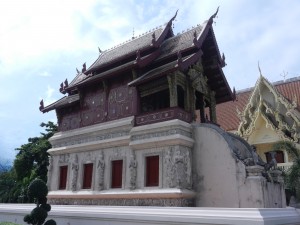
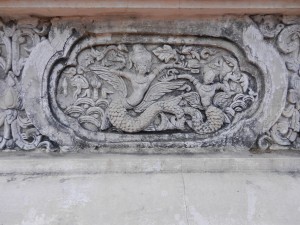
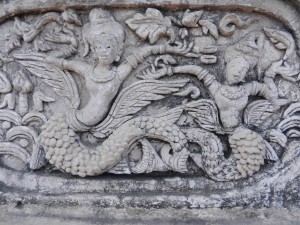
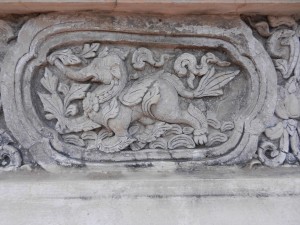
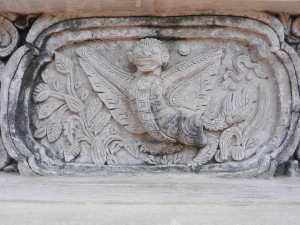
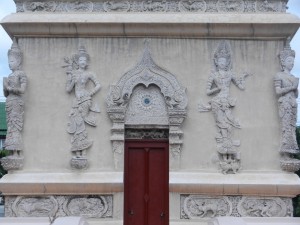
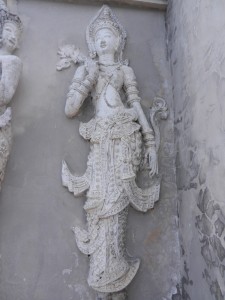
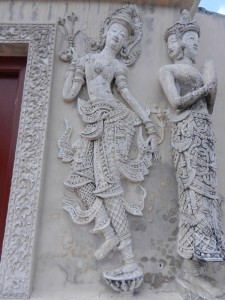
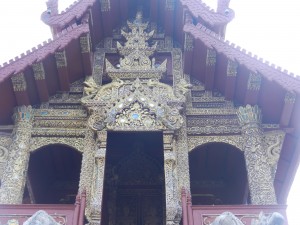
Comments on this entry are closed.